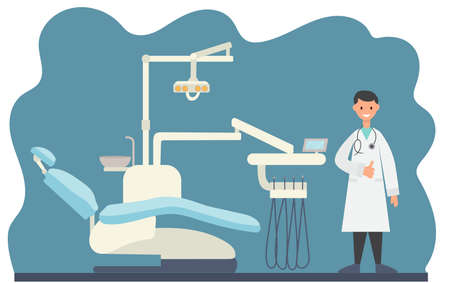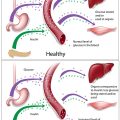Understanding the Rotator Cuff: Anatomy and Function
The rotator cuff is a group of four small muscles and their tendons that surround the shoulder joint. These muscles work together to keep the head of your upper arm bone (the humerus) securely in the shallow socket of your shoulder blade (the scapula). Think of the rotator cuff as a team of supportive cables holding your shoulder in place while allowing you to move your arm in many directions.
Key Muscles of the Rotator Cuff
| Muscle | Main Function | Common American Sports Involved |
|---|---|---|
| Supraspinatus | Lifts arm up (abduction) | Baseball, Basketball, Swimming |
| Infraspinatus | Rotates arm outward (external rotation) | Tennis, Football, Volleyball |
| Teres Minor | Assists with external rotation | Softball, Golf, Pitching sports |
| Subscapularis | Rotates arm inward (internal rotation) | Wrestling, Gymnastics, Weightlifting |
How Does the Rotator Cuff Work?
Your rotator cuff allows you to lift, rotate, and swing your arm. Everyday activities like reaching for something on a high shelf, throwing a football at Thanksgiving, or raking leaves in the fall all rely on these muscles working smoothly. When you shoot hoops with friends or play catch with your kids, your rotator cuff is hard at work stabilizing and moving your shoulder joint.
Why Is the Rotator Cuff Prone to Injury?
The shoulder joint has an incredible range of motion—think about how you can swing your arm in almost any direction. But this flexibility comes at a price. The rotator cuff tendons are relatively small and must handle a lot of stress during repetitive overhead movements. This makes them susceptible to wear and tear, especially in sports popular in the U.S. like baseball pitching or swimming laps.
Common Ways Americans Injure Their Rotator Cuffs:
- Pitching fastballs during Little League or Major League Baseball games
- Shooting three-pointers in basketball practice or games
- Lifting heavy boxes during a move or home improvement project
- Pushing snow off the driveway after a winter storm
- Tossing a football around during tailgates or backyard barbecues
Understanding how the rotator cuff works—and how easily it can be strained—helps explain why injuries are so common among athletes and active people across America.
2. Common Causes of Rotator Cuff Tears in the American Population
The rotator cuff is a group of muscles and tendons that help keep your shoulder stable and allow you to lift and rotate your arm. In the United States, rotator cuff tears are surprisingly common, especially among adults. Let’s break down why these injuries happen so often in the American population by looking at some of the main causes.
Aging: The Wear and Tear Factor
As we get older, our bodies naturally go through changes, and our tendons aren’t as strong or flexible as they used to be. This “wear and tear” makes people over 40 more likely to develop rotator cuff problems—even if they haven’t had a specific injury. It’s a bit like how the tread on your car tires gets worn down over time. This is especially true for Americans who remain active into their later years, whether it’s playing weekend golf, tennis, or just doing yard work.
Overuse Injuries: Everyday Activities Add Up
Many Americans have hobbies or jobs that require repeated overhead motions. Think about painters, carpenters, warehouse workers, or even avid swimmers and baseball players. Over time, all those repeated arm movements can put a lot of stress on the shoulder, wearing down the tendons until they start to fray or tear.
Examples of Overuse from American Lifestyles
| Activity/Job | How It Contributes to Tears |
|---|---|
| Baseball pitching | Repetitive overhead throwing strains the tendons |
| Construction work | Lifting heavy materials above shoulder height puts extra stress on the rotator cuff |
| Home improvement projects | Painting ceilings or installing light fixtures involves lots of arm lifting |
| Swimming (especially freestyle & butterfly) | Continuous overhead strokes can lead to gradual tendon wear |
Traumatic Injuries: Accidents Happen
A sudden fall or accident—like slipping on ice in a driveway or getting hurt during a contact sport—can cause an immediate tear in the rotator cuff. These traumatic injuries are more likely in active adults and seniors who might lose their balance or in younger people who play sports such as football or basketball.
Occupational Risks: Work-Related Stress on Shoulders
Certain jobs in America increase the risk of rotator cuff injuries because they involve heavy lifting, repetitive motion, or awkward positions. Here’s a quick overview:
| Occupation | Risk Factor Example |
|---|---|
| Nurses & healthcare workers | Lifting patients puts extra strain on shoulders |
| Warehouse employees | Moving boxes above head height increases tendon stress |
| Mechanics & assembly line workers | Working with arms raised for long periods can tire out the rotator cuff muscles |
| Athletic coaches/training staff | Demonstrating techniques repeatedly adds up over time |
The Takeaway on Common Causes
No matter your age or occupation, everyday activities and accidents can put your shoulders at risk. Understanding these common causes helps you recognize when you might need to pay extra attention to your shoulder health—or seek help if you start noticing pain or weakness.

3. Recognizing Rotator Cuff Tears: Signs, Symptoms, and When to Seek Care
Understanding the Warning Signs
Rotator cuff tears often start with subtle signs that can be easy to overlook. The most common early symptom is pain in the shoulder, especially when you lift your arm or reach overhead. Some people describe it as a deep ache that may get worse at night or when lying on the affected side.
Pain Patterns and How They Affect Daily Life
The pain from a rotator cuff tear can interfere with basic activities like combing your hair, reaching for something on a high shelf, or even getting dressed. Over time, weakness in your shoulder muscles may make it difficult to carry groceries, lift children, or participate in sports. Some people notice a clicking or popping sound when moving their arm.
| Symptom | Common Description | Impact on Daily Activities |
|---|---|---|
| Shoulder Pain | Dull ache, worse at night | Makes sleeping on side uncomfortable |
| Weakness | Trouble lifting or rotating arm | Difficulty reaching shelves, carrying bags |
| Limited Range of Motion | Cant move arm as high as usual | Trouble dressing, personal care tasks |
| Popping/Clicking Sensation | Sensation or sound with movement | Uncomfortable during exercise or work tasks |
When Should You See a Healthcare Provider?
If you notice ongoing shoulder pain that lasts more than a few days and does not improve with rest, ice, or over-the-counter pain relievers, its important to reach out to a healthcare provider. You should also seek care if you experience:
- Sudden loss of strength in your arm
- Severe pain after an injury (like falling or lifting something heavy)
- Trouble using your arm for everyday activities
- Numbness or tingling in your hand or arm
Navigating the U.S. Healthcare System for Shoulder Injuries
In the United States, you can start by making an appointment with your primary care doctor or a physical therapist. Many insurance plans allow direct access to physical therapy without a referral. If necessary, you may be referred to an orthopedic specialist for further testing such as an MRI or ultrasound. Early diagnosis and treatment can help prevent the problem from getting worse and get you back to your normal activities sooner.
4. Diagnosis: How Rotator Cuff Tears Are Identified
Clinical Examination Techniques
When someone in the U.S. visits a doctor with shoulder pain, the first step is usually a detailed medical history and physical exam. Healthcare providers often ask about how the pain started, what movements make it worse, and if there was any specific injury. During the exam, doctors use special tests to check for weakness, loss of motion, or pain when moving the arm in certain ways. Some common clinical tests include:
| Test Name | What It Checks For |
|---|---|
| Drop Arm Test | If you can slowly lower your arm without dropping it (checks for large tears) |
| Empty Can Test | If raising your arm with the thumb down causes pain or weakness (supraspinatus tendon) |
| External Rotation Resistance Test | If pushing outwards against resistance hurts or feels weak (infraspinatus/teres minor tendons) |
Imaging Technologies
If a rotator cuff tear is suspected after the physical exam, doctors usually recommend imaging studies to confirm the diagnosis and see how serious it is. The two most common imaging tools used in American healthcare are:
MRI (Magnetic Resonance Imaging)
MRI scans provide detailed pictures of soft tissues like muscles and tendons. An MRI can show if there is a full or partial tear, inflammation, or muscle atrophy. It is considered the gold standard for diagnosing rotator cuff injuries in the U.S.
Ultrasound
Shoulder ultrasound is also frequently used because it’s quick, non-invasive, and cost-effective. Ultrasound can reveal tears, swelling, and fluid buildup around the rotator cuff. It’s especially helpful for people who cannot get an MRI due to metal implants or claustrophobia.
| Imaging Method | Main Advantages | Main Limitations |
|---|---|---|
| MRI | High accuracy; shows detail; no radiation exposure | More expensive; may take longer; not suitable for all patients |
| Ultrasound | Quick; affordable; real-time imaging; no radiation exposure | User-dependent; less detail than MRI for some injuries |
Guidelines Used in U.S. Medical Practice
In America, most healthcare providers follow guidelines from groups like the American Academy of Orthopaedic Surgeons (AAOS) and the American College of Radiology (ACR). These organizations recommend starting with a good physical exam, followed by imaging if needed to confirm diagnosis or plan treatment. X-rays might be used to rule out bone problems but don’t show soft tissue tears well.
5. Evidence-Based Treatment Options and the Road to Recovery
Non-Surgical Treatments
Most people with rotator cuff tears in the United States start with non-surgical treatments, especially for partial tears or less severe cases. Here’s a quick look at the main options:
| Treatment | Description | Notes for U.S. Patients |
|---|---|---|
| Physical Therapy | Personalized exercise programs to improve strength, flexibility, and shoulder function. | Usually covered by insurance with a doctor’s referral; check your plan for session limits. |
| Medications | Over-the-counter NSAIDs (like ibuprofen) or prescribed pain relievers to reduce pain and swelling. | Many generic medications are affordable; check insurance formularies for coverage. |
| Corticosteroid Injections | Injections to quickly relieve pain and inflammation in the shoulder. | Typically performed in a doctor’s office; may be limited to a few times per year due to side effects. |
Recent U.S. Research on Non-Surgical Care
A 2023 study from the American Academy of Orthopaedic Surgeons showed that about 70% of patients with small-to-moderate rotator cuff tears improved with physical therapy alone, avoiding surgery altogether.
Surgical Options
If non-surgical care doesn’t provide enough relief, or if the tear is large or causing major weakness, surgery might be recommended. There are a few main types:
- Arthroscopic Repair: Minimally invasive surgery using tiny instruments and small incisions. Most common in the U.S.
- Open Repair: Traditional surgery with a larger incision for more severe cases.
- Tendon Transfer or Shoulder Replacement: For very complex or chronic tears, especially in older adults.
Insurance and Healthcare Access Tips
- PPO vs HMO: With PPO plans, you often have direct access to orthopedic specialists. HMO plans usually require a referral from your primary care doctor first.
- Pre-Authorization: Most surgeries need pre-approval from your insurance company—ask your provider for help with paperwork.
- Out-of-Pocket Costs: Deductibles and co-pays vary widely; call your insurer or use their online cost estimator before scheduling procedures.
- Physical Therapy Coverage: After surgery, rehab is key. Most American insurance plans cover post-op therapy, but session numbers may be capped—plan accordingly!
Your Road to Recovery: What to Expect After Treatment
- Pain Management: Use ice packs, prescribed meds, and gentle movement as advised by your healthcare team.
- Rehabilitation Exercises: Follow your physical therapist’s plan closely. U.S.-based programs focus on gradual progress—don’t rush!
- Return to Activities: Most patients can drive within a few weeks after minor repairs but may need several months before returning to sports or heavy lifting. Always check with your surgeon or therapist first.
- Telehealth Options: Many therapists now offer virtual follow-ups—great for busy schedules and rural areas!
The Takeaway for Americans Navigating Rotator Cuff Care
No matter which treatment path you choose, early diagnosis and evidence-based care give you the best shot at full recovery. Don’t hesitate to ask your medical team questions about insurance coverage, therapy options, and recent research relevant to your specific case.


